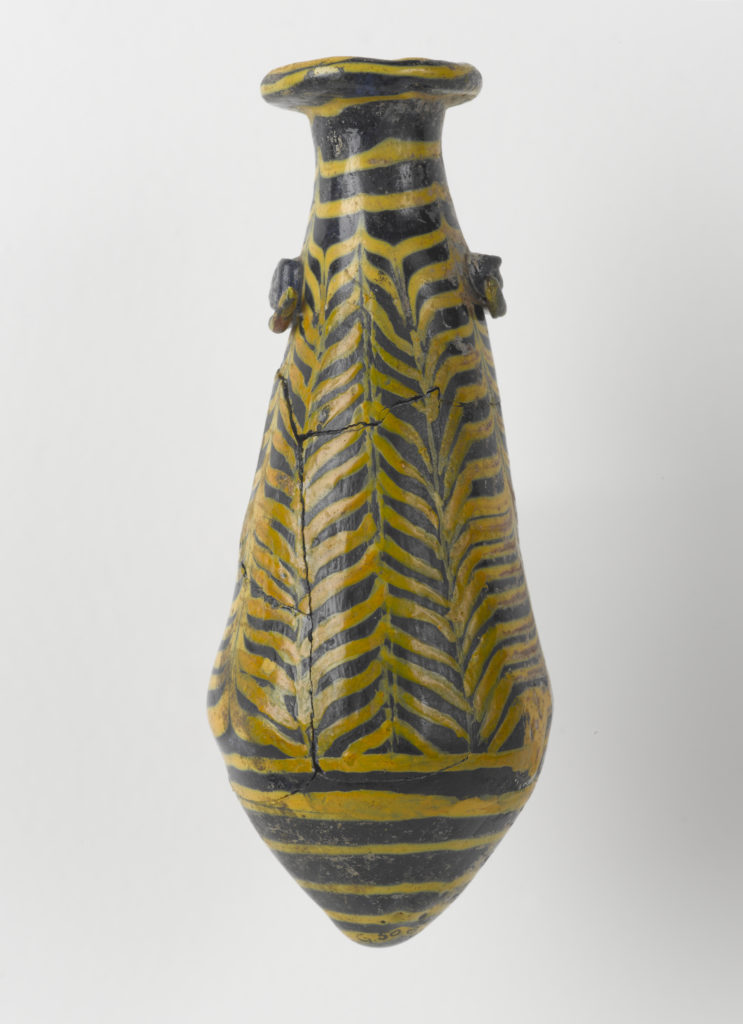Alabastron (work of art)
Artwork Info
About
Key Ideas
- Alabastra (plural of alabastron) were small vessels made of pottery or glass. They were used to hold oils like perfume or massage oils.
- This alabastron is made using a glass core forming technique.
- The core of this vessel was formed with blue glass. It was then decorated with yellow glass threads to create its featherlike design.
- At the end of the New Kingdom (1550 to 1069 BCE), Egypt scaled back on glass production and began importing glassware from nearby regions instead.
- This alabastron probably comes from Cyprus, where vessels like this one were exported as luxury goods to distant Mediterranean cities.
Learn More
An alabastron is a small type of pottery or glass container, or vessel, used for holding oil. These vessels originated in the 11th century BCE, in ancient Egypt. The vessels were carved from alabaster, a soft mineral or rock that was used for carving. The name alabastron comes from the word alabaster. Most alabastra (plural of alabastron) were similar in shape, with an elongated body that was rounded at the bottom. These types of vessels often featured a lipped opening at the top and small handles on either side of the neck.
This alabastron was made using a core forming glass technique. A form was made from clay and attached to a rod. Once it was dried and filed into the preferred shape, it was dipped in molten (hot liquid) glass. Glass threads of another color were then wrapped around the vessel and manipulated using tools to create different designs. When the vessel cooled down, it was removed from the rod, and the clay form was removed to create an open space inside the vessel to hold oil.
After mastering many glass-making techniques, Egypt stopped manufacturing glass vessels at the end of the New Kingdom (1550 to 1069 BCE). Glass production shifted to the Mediterranean and Near East during this time. Egypt began importing luxury glass vessels, as well as other locally unavailable goods, from other nearby regions.
This pyriform (pear-shaped) alabastron was probably imported from Cyprus, where more than half the known glass alabastra were found. Although most alabastra were found on the island of Cyprus, an alabastron of the same type was found on the Antikythera shipwreck. This indicates that the vessels were exported as luxury goods to neighboring regions.
It is unknown where in Egypt this alabastron was recovered. Studies of alabastra discovered throughout the Mediterranean suggest that this type of vessel was made sometime during the end of the second century to the first half of the first century BCE.
Additional Resources
Resources for Teachers:
- View another alabastron and read about the history of alabastra.
- Watch a video about alabastra.
Resources for Students:
- Watch a video about the core forming glass technique and see how alabastra were made.
- View a similar vessel at the Metropolitan Museum of Art.

